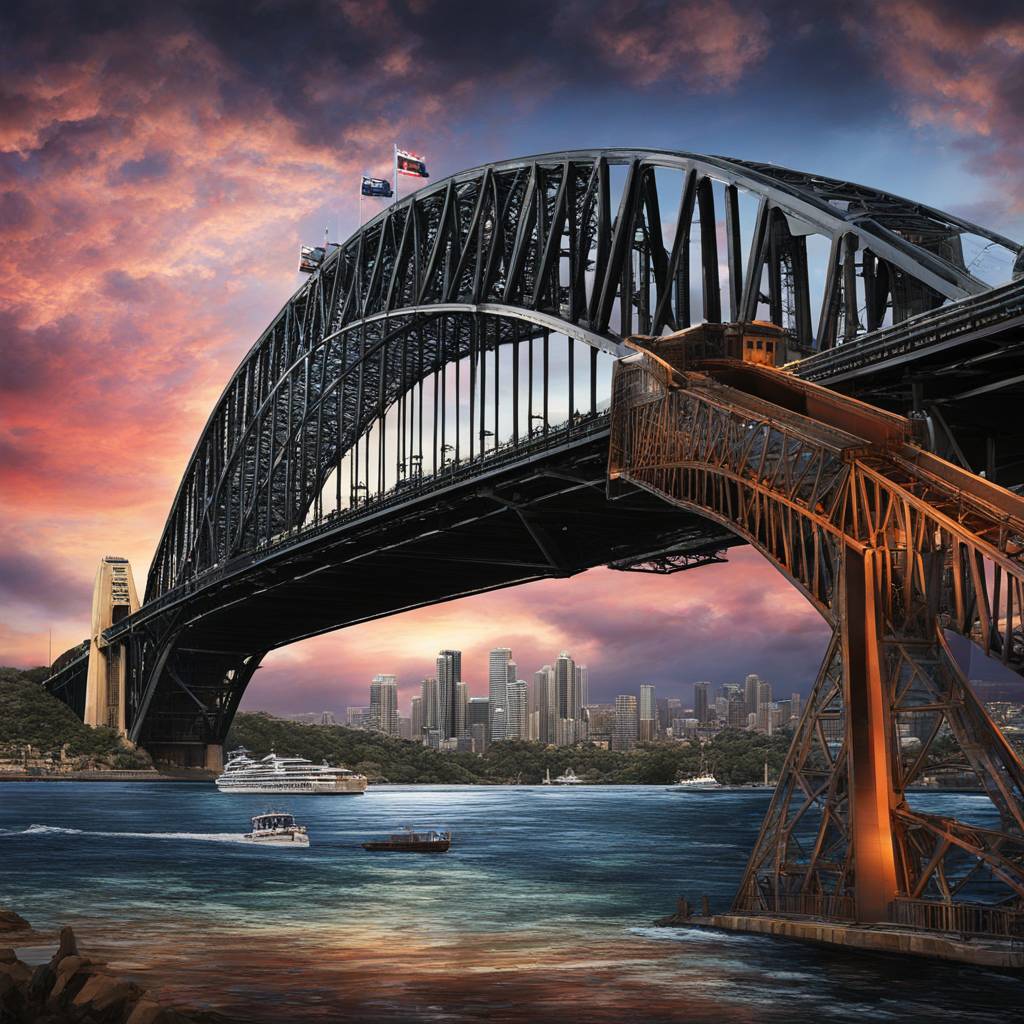The potential risks that large ships pose to bridges, particularly in Sydney Harbour, are discussed in the context of the 1975 Tasman Bridge disaster in Hobart. The Lake Illawarra bulk carrier collided with the bridge, leading to casualties and a significant overhaul of engineering and shipping regulations globally. The tragic event highlighted the need for engineers to anticipate the growth in ship size and potential impacts on infrastructure. In Sydney Harbour, the design of the Harbour Bridge mitigates some risks, as its pylons are located on land, reducing the chance of a ship colliding with them directly.
While Sydney Harbour’s bridges may be less vulnerable to ship strikes compared to others globally, the potential risk posed by oversize cruise ships passing under the Harbour Bridge remains a concern. The clearance level for ships passing under the bridge is lower than the height of some of the largest cruise ships, creating a potential hazard. Despite the main structural element of the bridge being higher than the road deck, significant damage could still occur if a ship were to collide with the bridge. Therefore, there is a need to explore better support and defense mechanisms for bridge pylons to mitigate potential risks.
As the era of autonomous shipping approaches, experts warn of new risks that could impact bridge safety. The vulnerability of ships to hacking poses a potential threat to infrastructure such as bridges, highlighting the importance of considering cybersecurity in addition to physical design and infrastructure. Policies and regulations can only go so far in protecting bridges from potential hazards, and additional measures may be necessary to safeguard against threats posed by bad actors. The ongoing consideration of ship safety in harbor areas such as Sydney remains crucial as technology and shipping practices evolve.
The discussion includes the importance of design and engineering in anticipating future risks posed by larger ships to bridges. Australian standards require engineers to design bridges based on the largest ship envisaged over the next 100 years. The necessity of considering foreseeable future developments in ship size and impact is emphasized to prevent catastrophic events similar to the Tasman Bridge disaster. While it may be challenging to predict exact changes in ship size and capabilities, efforts to anticipate and prepare for potential risks are essential in ensuring the safety of bridges and infrastructure.
The potential impact of oversize cruise ships passing under the Harbour Bridge is highlighted as a hypothetical risk scenario. The height of some cruise ships exceeds the clearance level for passing under the bridge, raising concerns about potential collisions and damage to the structure. While the main structural element of the bridge may prevent total collapse in the event of a collision, significant damage could still occur. The need for better support and defense mechanisms for bridge pylons to mitigate these risks is emphasized, particularly as technology and ship sizes continue to evolve.
As the discussion shifts to the era of autonomous shipping and cybersecurity risks, experts stress the importance of considering new vulnerabilities that could impact bridge safety. The potential for ships to be hacked and pose a threat to infrastructure adds a layer of complexity to ensuring the safety of bridges in harbor areas. Policies and regulations may need to be supplemented with physical design and infrastructure changes to protect against potential hazards posed by bad actors. As technology advances and shipping practices evolve, ongoing consideration of ship safety in harbors remains crucial to safeguarding bridges and infrastructure from modern threats.


